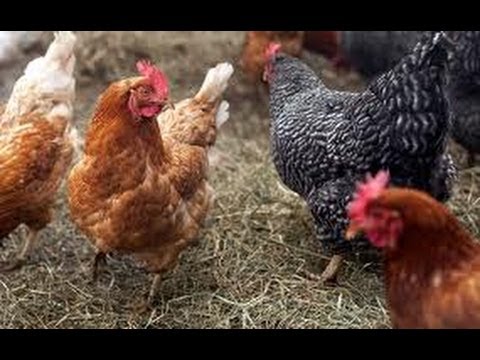Here's a pic of the inside of that same coop. I will be adding both leaves and pine straw today/tomorrow & next week when I'm off for Thanksgiving. My hubby has fallen for this little girl (lost the other one the first night - not sure why - think failure to thrive even though she was older than a week - she was added to the batch I purchased at no charge... Maybe they knew?) and is on board w/ getting 4-5 more GLW pullets as soon as I find some. There is a mixture of hay (coastal bermuda that was OLD and removed from both my hay shed and the feed room (think it was the hay shed for the previous owner?), pine shavings from that white bag she's standing in front of, leaves and pine straw (just 1 trashcan so far).

I am LOVING this DLM and I'm soooooo glad that I found this thread. I will also be applying the concept to our pastures (to start - won't be any chicken manure UNLESS I go ahead & bring in chicken litter from one of the many commercial houses/farms in our area) - will be a mix of pony manure, pine straw, hay & leaves. ***edited to add - Will be a true, chopped mix - as I will be using the lawn mower & cyclone rake to pick up the pastures and under the trees and then will leave "lines" when I empty the cyclone rake. Then will use the ponies w/ a drag to spread the "lines". PROMISE - I'll post pics when I do that, if you want to see. ***
I will also be putting down a thick "bed" of just pine straw (maybe leaves?) in an area where I feed the pony boys that is lower and is constantly underwater during the rains we've gotten this summer (got 1.68" on Wednesday according to our rain gauge) . Maybe that will build it up? We shall see. The ponies have been moved out of that area directly when tied to eat at their feed buckets, but I have to walk over/thru it when I feed. Prefer not having slick mud since it's already one area that's not straight sand... and I don't want to do the "splits" if I slide
 . Getting too old for that and it's painful to deal w/ pulled groin muscles these days. Plus, it upsets the ponies when you "fall down" - though it's good for them to learn it's OK -
. Getting too old for that and it's painful to deal w/ pulled groin muscles these days. Plus, it upsets the ponies when you "fall down" - though it's good for them to learn it's OK -
 and not to freak out...
and not to freak out...
I am LOVING this DLM and I'm soooooo glad that I found this thread. I will also be applying the concept to our pastures (to start - won't be any chicken manure UNLESS I go ahead & bring in chicken litter from one of the many commercial houses/farms in our area) - will be a mix of pony manure, pine straw, hay & leaves. ***edited to add - Will be a true, chopped mix - as I will be using the lawn mower & cyclone rake to pick up the pastures and under the trees and then will leave "lines" when I empty the cyclone rake. Then will use the ponies w/ a drag to spread the "lines". PROMISE - I'll post pics when I do that, if you want to see. ***
I will also be putting down a thick "bed" of just pine straw (maybe leaves?) in an area where I feed the pony boys that is lower and is constantly underwater during the rains we've gotten this summer (got 1.68" on Wednesday according to our rain gauge) . Maybe that will build it up? We shall see. The ponies have been moved out of that area directly when tied to eat at their feed buckets, but I have to walk over/thru it when I feed. Prefer not having slick mud since it's already one area that's not straight sand... and I don't want to do the "splits" if I slide


Last edited:




